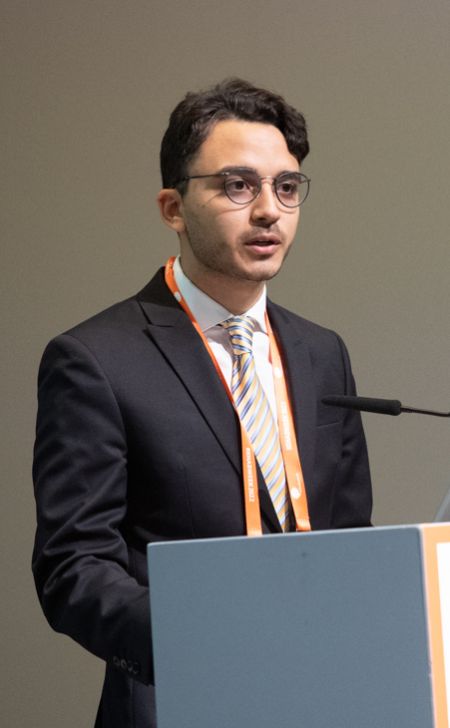Working on a Groundbreaking Wireless Prosthesis Device
Omar Tawakol is the recipient of the 2024 Dr. Bhakta B. & Sushama Rath Endowed Research Award, recognizing the significance of his research, conducted with adviser Philip Troyk, executive director of the Pritzker Institute of Biomedical Science and Engineering and Robert A. Pritzker Endowed Chair in Engineering, and its potential for “significant societal impact on technology.”
Omar also received first place in the Vodovnik Student Paper Competition at the 2022 International Functional Electrical Stimulation Society conference.
His paper detailed his work conducting preclinical studies of a device that aims to restore the ability to walk using a wireless stimulator implanted in the spinal cord.
“A lot of people at the conference were excited to see this new wireless technology because it’s a novel approach,” says Omar.
Recovery of function following a spinal cord injury remains a daunting medical challenge, and over half of people with spinal cord injuries do not recover the ability to walk.
“This research could provide hope for millions of people with spinal cord injuries around the world that they can eventually regain their ability to stand and walk,” says Omar, “and I think this research allows us to better understand how the brain and the spinal cord work, laying the foundation for the development of other neuroprosthetic devices.”
Omar is a member of the Laboratory of Neural Prosthetic Research at Illinois Institute of Technology, led by Troyk.
He joined the lab as a second-year undergraduate student through the Armour R&D program, working on the pioneering intracortical visual prosthesis, which recently underwent its first clinical trial.
He says Armour College makes it easy for undergraduate students to get involved with high-impact research projects, and that doing research at a smaller university lets students get more direct interactions with and feedback from professors.
Omar continued to work in Troyk’s lab for the remainder of his undergraduate program, after which he continued on as a graduate student.
As he continues to develop the spinal cord stimulator, Omar goes back and forth between making changes to the design and construction of the implant and conducting preclinical trials to test its effectiveness.
Omar says he hopes to see the project through to clinical trials and to continue working on groundbreaking neural prostheses.
“I’d like to make these prostheses readily available and affordable so that more people can benefit from them,” says Omar. “My goal is to improve patients’ lives.”





